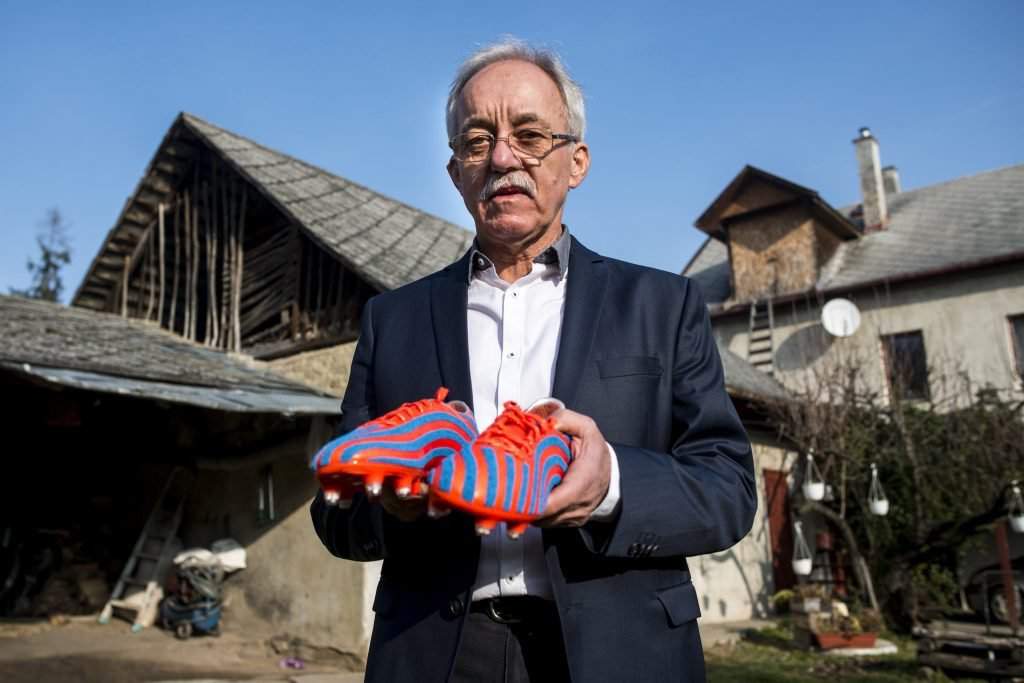Adidas to pay the Hungarian inventor of the best football shoe ever

According to index.hu, László Oroszi invented the ultimate football shoe, but his patent was usurped by Adidas, who designed one of the world’s best and most successful football shoes theafter. The lawsuit between László Oroszi and Adidas was like the fight of David and Goliath. The story seems to have a happy end, but the Hungarian inventor lost much more than what he won, and the company barely lost anything compared to how much they have won.
The good news is that the lawyer representing the inventor of the ultimate football boots and the patent agent managed to prove Oroszi’s right with endless determination. What happened was that László Oroszi invented a football shoe, which caught the eye of Adidas. The inventor was shocked to see that his idea was carried out without him. He sued Adidas, who fought hard. The final judgement was pronounced after 14 years: Adidas has to pay.
The person who invented the best football shoe ever
The Adidas Predator Mania produced from 2000 to 2003 was probably one of the best football shoes ever. It debuted at the European Championships in 2000, where Trezeguet scored the golden goal for the French national team wearing the shoes. Then, almost all of the football stars wore this shoe at the 2002 World Cup, from Zidane, Del Piero to Beckham.
The cult of the Mania shoe is so big that a used pair still cost 80-100 thousand forints online. And the limited retro series launched this year cost a similar amount of money, but they ran out of stock in just a few days’ time.
What was special about the Predator Precision and the following Predator Mania shoes was the softly corded performance of the spiral surface. This solution was worked out by László Oroszi in 1995-96 and then patented in Hungary and whole Europe, but something went wrong during the latter process, so the invention’s international protection misfired.
In 2005, patent agent Mihály Lantos took up the case when László Oroszi’s faith was already shattered. “If I hadn’t met Mihály Lantos then, I wouldn’t be anywhere today” said the inventor referring to the fact that during the lawsuit even him being the actual inventor was questioned.
It all started out great
The inventor and his team made it to the point of producing the shoes in 1998, when the product attracted Adidas’s attention. The team was stunned by the German interest as they wouldn’t have guessed that the company would simply market the shoes without a business contract. The inventors didn’t suspect anything, they trusted the company and gave them a few pairs of the shoe without signing any type of non-disclosure agreement.
From dream to nightmare
Nothing happened for a while, but Oroszi realised in 2000 that the newest football shoe of the German brand featured the solution invented by him. So he started a piracy lawsuit against Adidas Budapest, because he couldn’t sue the parent company due to the foozled European patent.
It was obvious from the first moment that Adidas took the lawsuit seriously and did everything to prolongate the procedure, hoping that Oroszi would give up sooner or later. The inventor spent all of his fortune on the lawsuit, he didn’t have enough money left to extend the patent in 2007, so he can’t partake of the price of the current retro models.
He looked up Mihány Lantos, the then leader of the Danubia Patent and Law Office Kft., in this hopeless situation, in 2005. The patent agent took on the representation for the greatness of the challenge and for moral reasons. “I could tell that he was right” said Lantos, who first saved the Hungarian patent and then collaborated with Sár és Társai Law Firm for a more effective representation.
You might win, but it will never be over
Index.hu writes that, after seven years of fighting, the Hungarian court pronounced the validity of László Oroszi’s patent in 2012. After the legally binding judgement, it was time to start the legal trial concerning the financial profit the piracy returned to Adidas Budapest Kft.
But Adidas Budapest didn’t deliver the requested data quoting saying that they didn’t have them anymore as the law only obliges keeping them for 5 years. They finally handed in the requested marketing data one and a half months after the deadline. But what kind of data was that if they allegedly hadn’t kept them?
A full field attack
The lawyers of the German company started a sudden attack adverting that Oroszi’s financial claims became forfeited during the long process. This meant two more years of litigation in practice. The case was finally brought to the Curia of Hungary, where they also decided in favour of Oroszi.
Then, they handed in the financial demands in 2014. According to Oroszi’s legal representatives, Adidas Budapest profited from Oroszi’s patent in two ways: they had a direct profit, and the outstandingly successful shoes also added to the company’s significant brand value growth (at the time Adidas put its technological development into the focus of its marketing communication).
The calculation of the share from the income should’ve been easy based on the data delivered by Adidas, but those weren’t completely right. For instance, they estimated a lot less pairs of shoes than the witnesses of the demander. Moreover, they claimed that Oroszi only invented the operator lane in itself which he put on a football shoe, not the operator laned football shoe.

No, no and no
In the April of 2016, the court of first instance stood on the side of Adidas in three aspects: they accepted Adidas’s data delivery, they didn’t accept the brand value growth argument and they made place for Adidas’s reference to “overlapping proportion” as a decreasing aspect, which decreased Oroszi’s share to 25%.
The judgement was like three heart attacks for Oroszi, but they didn’t give, they lodged an appeal juts like Adidas Budapest Kft., who wanted to further decrease Oroszi’s share, even though it should’ve been increased, as it turned out that Adidas Budapest also supplied the Romanian market.
The end game
The final judgement was announced on the 8th of November, 2016. Regarding the overlapping proportion, the previous decision was reversed so the share was increased back to 100%. For the rest, the court of appeal accepted the calculation and justification of the court of first instance.
Furthermore, they announced that Oroszi has to take on 70% of the lawsuit cost, which he could include in the sum paid to him by Adidas, but no matter what, the remaining will be spent on old loans from his friends, acquaintances whose help he had asked for during the realization of his big dream of producing the world’s best football shoe in Hungary.
Photos: MTI, prodirectsoccer.com, facebook.com/adidas
Copy editor: bm
Source: http://index.hu/







Good for him.